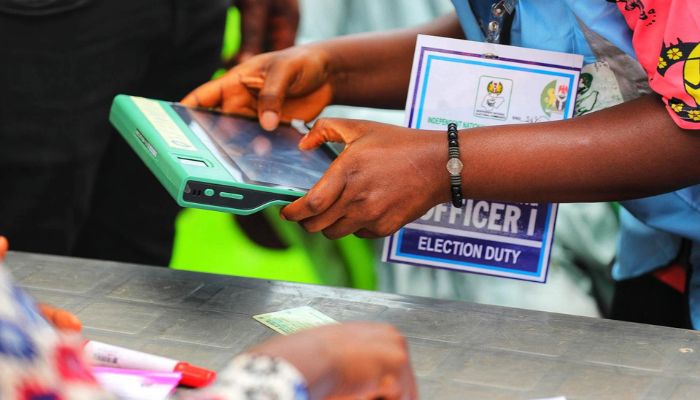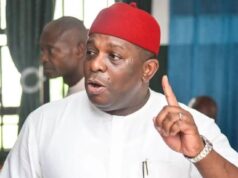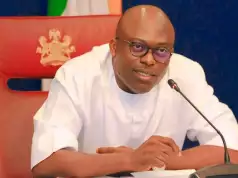A digital forensic expert, Mr. Hitler Nwala, on Thursday, narrated before the Presidential Election Petition Court, PEPC, sitting in Abuja, how he uncovered that the Independent National Electoral Commission, INEC, wiped off results of the presidential election held on February 25.
Mr. Nwala mounted the box as the 25th witness of the candidate of the Peoples Democratic Party, PDP, Alhaji Atiku Abubakar, who is challenging the declaration of President Bola Tinubu of the ruling All Progressives Congress, APC, as winner of the presidential election.
Testifying before the Justice Haruna Tsammani-led five-member panel, the witness, alleged that the results that were deleted, were contained in the Bimodal Voter Accreditation System, BVAS, machines, that were deployed for the conduct of the elections.
READ ALSO: “Japa” Syndrome Will Favour Nigeria – Peter Obi
Atiku and his party had insisted that data from the BVAS machines which were used for the accreditation of voters and uploading of polling unit results, would establish their allegation that the presidential election was rigged in Tinubu’s favour.
Meanwhile, led in evidence by lead counsel for the petitioners, Chief Chris Uche, SAN, Mr. Nwala, said he was summoned through a subpoena, to appear as a witness in the case.
He told the court that he specifically inspected and conducted forensic analysis on 110 BVAS that were deployed for the conduct of the presidential election in the Federal Capital Territory, FCT, Abuja.
According to him, upon his enquiry, the electoral body maintained that it had to wipe off the information in the BVAS to be able to redeploy them for the Governorship and State Houses of Assembly elections that held on March 18.
However, during cross-examination of the witness, counsel to INEC, Mr. Abubakar Mahmoud, SAN, faulted report of the witness, stressing that 110 BVAS devices used for the election, was not sufficient to establish that there was any irregularity on the part of the Commission.
Mahmoud, SAN, while contending that the sample size the witness relied on to write his report, was small, noted that a total of 3, 263 BVAS devices, were deployed during the presidential election.
He argued that the sample the witness based his report on, represented only about 3.5 percent of the total device the INEC deployed in FCT and 0.06 percent of the total BVAS that was used for the presidential election, across the country.
It will be recalled that INEC had disclosed that it needed to “re-configure” all the BVAS machines that were used for the presidential poll so as to be able to use them for the next round of elections.
On their part, both President Tinubu, whose legal team was led by Chief Wole Olanipekun, SAN, and APC’s legal team led by Prince Lateef Fagbemi, SAN, urged the court to reject the report of the witness which they said was laced with manifest errors.
Nonetheless, the petitioners’ counsel, Uche, SAN, described the evidence of the witness as very vital to the case of his clients “considering that it was the first that we had a technologically driven election in this country,” he added.
Shortly after the witness was discharged by the court, the petitioners, tendered from the Bar, bundles of certified copies of INEC’s Forms EC8A from 20 Local Government Areas, LGAs, in Ogun state.
The documents were tendered through a member of Atiku’s legal team, Mr. Eyitayo Jegede, SAN.
Equally tendered in evidence by the petitioners, were certified copies of polling unit results (Form EC8A series) from 17 LGAs in Ondo state, 27 LGAs in Jigawa as well as from 20 LGAs in Rivers State.
INEC opposed the admissibility of the documents in evidence, saying it would give its reasons in its final written address.
Likewise, the other Respondents- President Tinubu and the APC- equally raised objections to the admittance of the electoral documents in evidence.
Despite the objections, the Justice Tsammani panel accepted the documents in evidence and marked them as Exhibits in the matter.
The court subsequently adjourned its proceedings till Friday to enable the petitioners to close their case, after which the Respondents will open their defence.





![I Will Retire From Politics After My Tenure As Governor – Otti [Video] Abia Opposition Members Seeking For Negotiation, Settlement – Otti](https://abntv.com.ng/wp-content/uploads/2025/09/Dr.-Alex-Otti-1-300x194.jpg)




![I Will Retire From Politics After My Tenure As Governor – Otti [Video] Abia Opposition Members Seeking For Negotiation, Settlement – Otti](https://abntv.com.ng/wp-content/uploads/2025/09/Dr.-Alex-Otti-1-100x75.jpg)